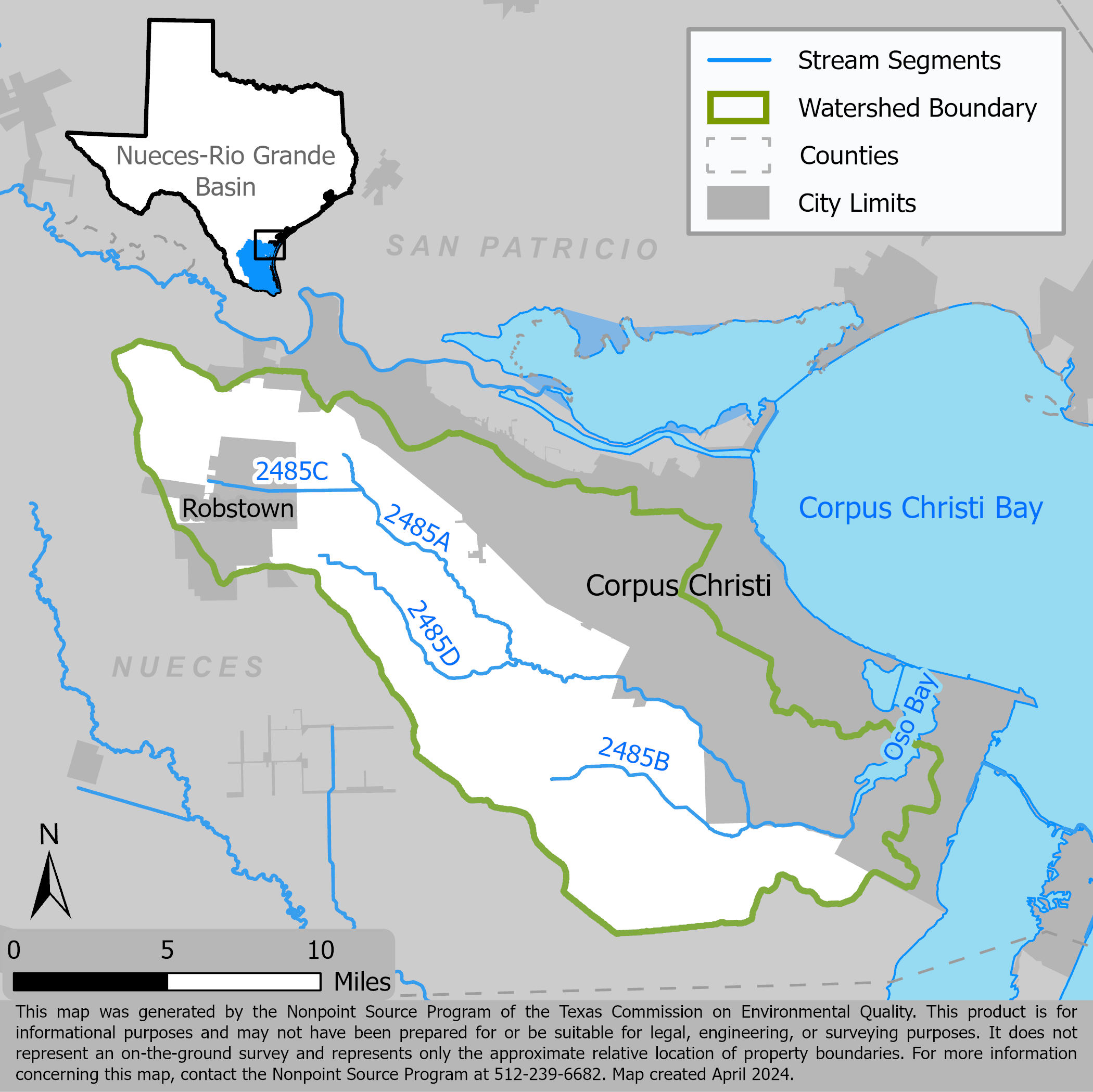Oso Bay and Oso Creek Watersheds: Implementing a Total Maximum Daily Load
The Coastal Bend Bays and Estuaries Program created a physical model of the Oso Bay and Oso Creek watershed that was used at educational events in elementary schools and in the community to help participants understand their role in reducing nonpoint source pollution.

On this page:
Project Area
River Basin: Bays and Estuaries
Water Body: Oso Bay (2485), Oso Bay Oyster Waters (2485OW), Oso Creek (2485A), West Oso Creek (2485D), and two unnamed tributaries (2485B and 2485C)
Location: Cities of Corpus Christi and Robstown
Background
Oso Bay is an enclosed, shallow water body situated along the southern shore of Corpus Christi Bay that receives stormwater runoff mostly from Corpus Christi, and freshwater input from Oso Creek whose flow is dominated by permitted wastewater discharges. As of 2024, Oso Bay did not meet state water quality standards due to low dissolved oxygen, and high bacteria concentrations in oyster waters. Oso Creek also did not meet the primary contact recreation use standards due to high concentrations of bacteria.
Two Total Maximum Daily Loads (TMDLs) were approved for Oso Bay and Oso Creek in 2008 and 2013, respectively. One TMDL Implementation Plan to address both the Creek and the Bay impairments was adopted in 2019.
Project Description
September 2020 – August 2024
The Coastal Bend Bays and Estuaries Program created an education and outreach program that cultivated personal responsibility for water quality and polluting behaviors in the Oso Bay and Oso Creek watershed. The program created and used a plastic, custom relief model of the watershed for elementary school and community education and outreach events. Seven outreach events were conducted reaching approximately 364 residents and 1,970 students.
The project connected residents with their watershed by allowing participants to visualize their “place” within the watershed, understand pollutant pathways better, and recognize their role in reducing nonpoint source pollution.
For More Information
Coastal Bend Bays and Estuaries Program
To find out more about the NPS Program, call 512-239-6682 or email us at nps@tceq.texas.gov.

 Back to top
Back to top